Remediation of the irrigation channel contaminated with mercury in Naiman, Kyrgyzstan
support of Pure Earth/Blacksmith Institute by members of the current Kyrgyzstan EHPMI team.
Project dates: June 2017
Number of people at risk: 1000 residents
Source of pollution: Mercury in an irrigation channel
Project implementers: Civil Society Association “Ekois Bishkek”
The total cost of program implementation: $10,000, the project was funded by UNIDO, European Commission
The project was implemented in June 2017 with financial and organizational support of Pure Earth/Blacksmith Institute by members of the current Kyrgyzstan EHPMI team.Project dates: June 2017Number of people at risk: 1000 residentsSource of pollution: Mercury in an irrigation channelProject implementers: Civil Society Association “Ekois Bishkek”The total cost of program implementation: $10,000, the project was…
Naiman Village is located in Nookat District, Osh Region, Kyrgyzstan.
There is a mercury-antimony deposit of Chonkoy and the Uluu-Too mine about ten kilometers north-east of Naiman Village. Khaidarkan mercury plant developed the mine from 1963 to 1994. The enterprise employed 600-700 people, mainly residents of Naiman and Kyzyl-Kiya.
In September 1995, the enterprise was closed due to lack of government subsidies, departure of skilled labor and difficult situation on the metal market. This resulted in departure of many villagers who searched for employment elsewhere. In 1998, the remaining assets of the plant were privatized and further processing of mercury-containing wastes was continued for several months. Nowadays the property of the former enterprise is almost completely destroyed. All of the company’s main assets have been demolished, sold, or plundered by the local population.
While it was operational, the mine infrastructure included power transmission lines, water pipes, underground mines, a concentrating mill, a metallurgical plant, a tailings pond and slag piles. In other words, the company had a full-cycle of mercury production. The termination of the development of the deposit was not followed by cleaning up or environmental rehabilitation of the area.
Some parts of Naiman got contaminated with the wastes from antimony and mercury production. The inhabitants of Naiman did not know anything about mercury and antimony health risks.
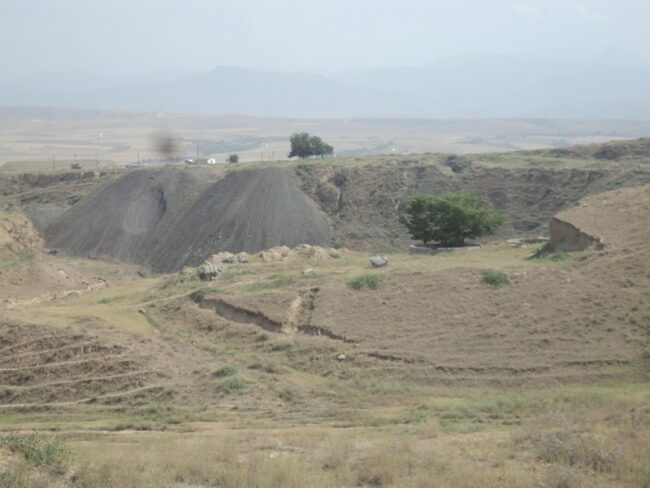
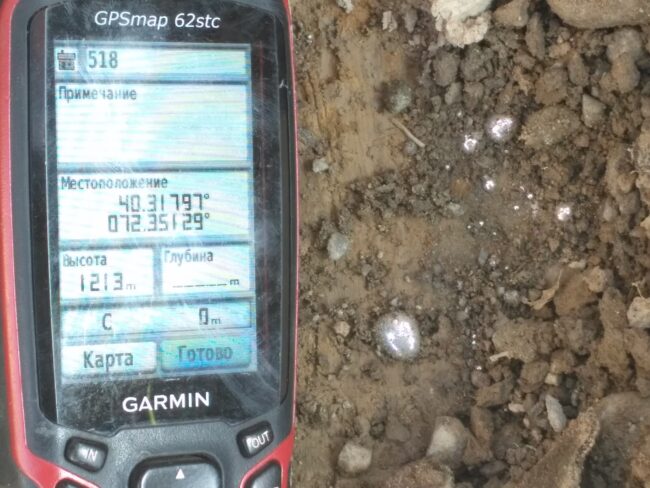
According to local residents, plant workers brought home elemental mercury from the factory hoping to sell it, but later found no use for it and disposed of it right in the irrigation channels of the village, where mercury settled on the bottom. The water from the irrigation channels enters the gardens of local residents and is used for drinking by domestic animals and bathing by people. Local residents said that there were many places in the village where the workers poured elemental mercury.
Ikram Kazakov, a former plant worker: “Mercury in the irrigation ditches was not only there because of irresponsible dumping by local residents. There are large diameter pipes used inside the irrigation ditches. Those pipes were previously used at the plant for mercury cooling. Some mercury settled on the walls of the pipes. When the pipes were installed in the channels the mercury gradually washed off from the pipes and settled at the bottom of the irrigation channels.”
The current population of Naiman is 1800 people. It was estimated in the initial assessment that about 1000 people were directly and indirectly affected by the mercury contamination.
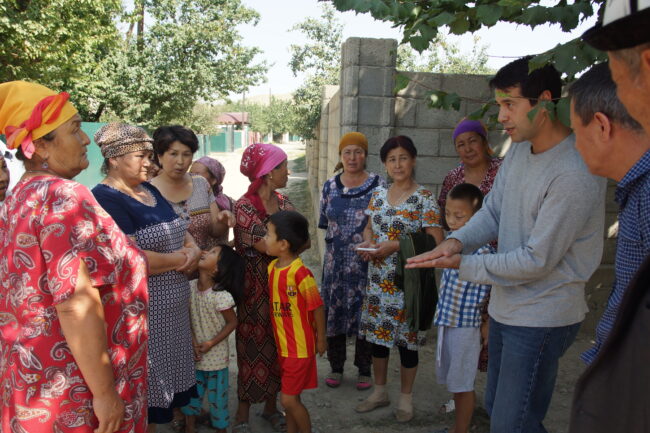
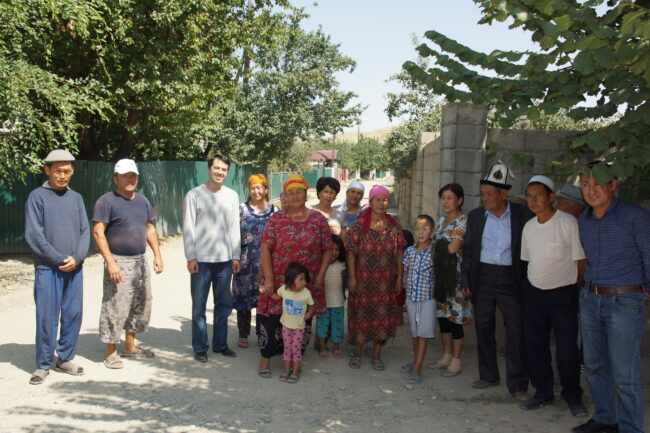
Initial Area Tests and Screenings
The initial site screening assessment was conducted in October 2015 by Dr. Almaz Kyrgyzbaev – a member of Ekois team. Four samples of soil and sediments from the irrigation channel were taken and analyzed in the laboratory of Kadamzhai Centre for Disease Prevention and Sanitary Inspection. The results of the analyses revealed soil mercury concentrations up to 280 mg/kg (ppm). This was 26 times higher than the Soil Screening Level for mercury (11 mg/kg).
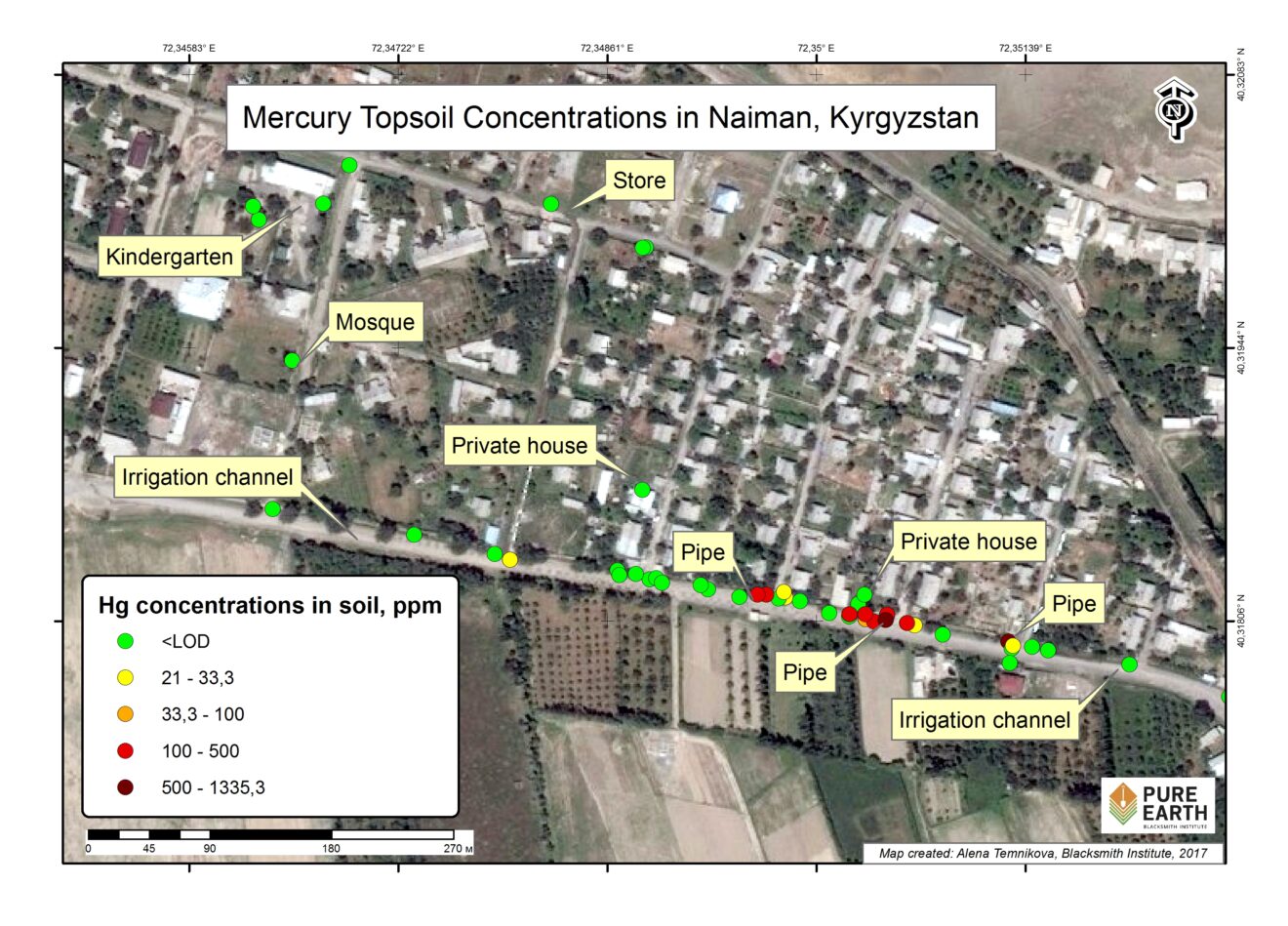
Cleanup
Based on the results of the assessment it was proposed to clean up 650 meters of the channel along the street.
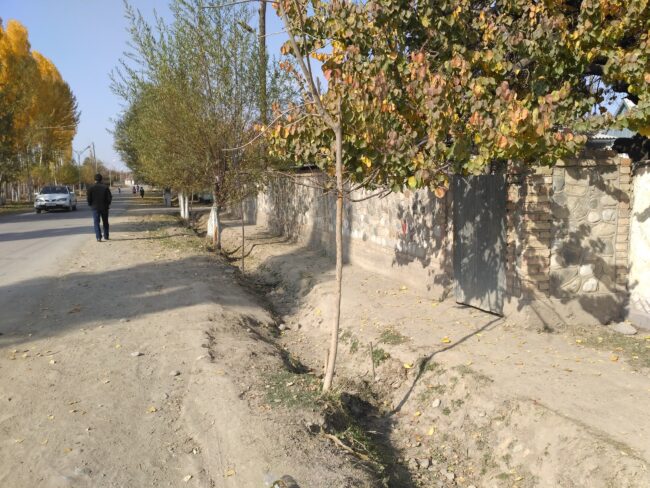

The main purpose was to take out the upper contaminated layer from the bottom of the channel (about 150 tons) of soil.
The Administration of Naiman Village was very supportive of the plan to clean up the area. The Direction of Kadamzhay Antimony Factory allowed the remediation team to use the tailings of the factory for the disposal of the excavated contaminated soil.
The cleanup was conducted using special equipment and manual labor on 18-22 of June 2017. The territory was cleaned up in 3 days. One excavator, a cargo dump truck and five workers from the local population were involved. Before the work the remediation crew was received safety instruction.


As a result of the remediation, about 160 tons of soil were transported to the tailing pond and more than 650 meters of the channel were cleaned. According to local residents, it was the first cleanup effort in over 20 years.


Polluted soil was transported to the tailings of Uluu-Too mine.
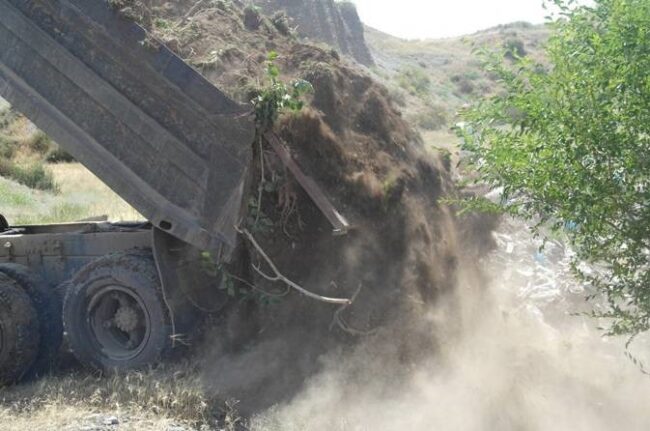
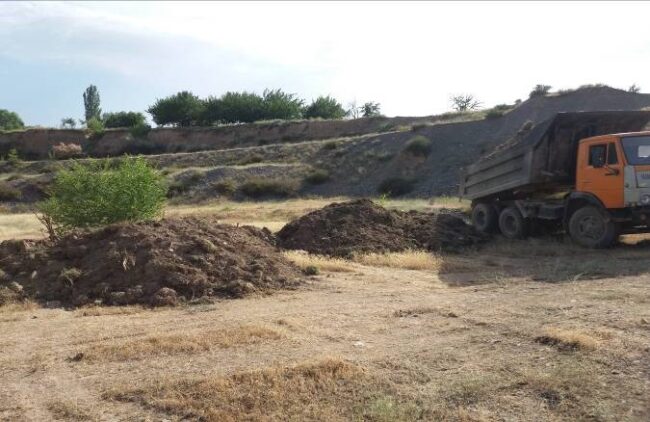
Indira Zhakipova distributed many information materials (books, brochures, posters, disks, etc.) about environmental health risks among local residents.
Indira Zhakipova, Project Coordinator: “It was shocking for me to hear from senior residents of Naiman about their childhood when they played with mercury and it was nothing out of the ordinary. At first meetings the local people were saying: “We live with mercury our whole life and it is not a problem.” Such ignorance puts children at risk of mercury poisoning. It took us quite a while to educate schoolchildren, their parents, and teachers and change their attitudes.”
Post Remediation Assessment
In October 2017 the project team conducted post remediation assessment that showed that there was some remaining contamination.
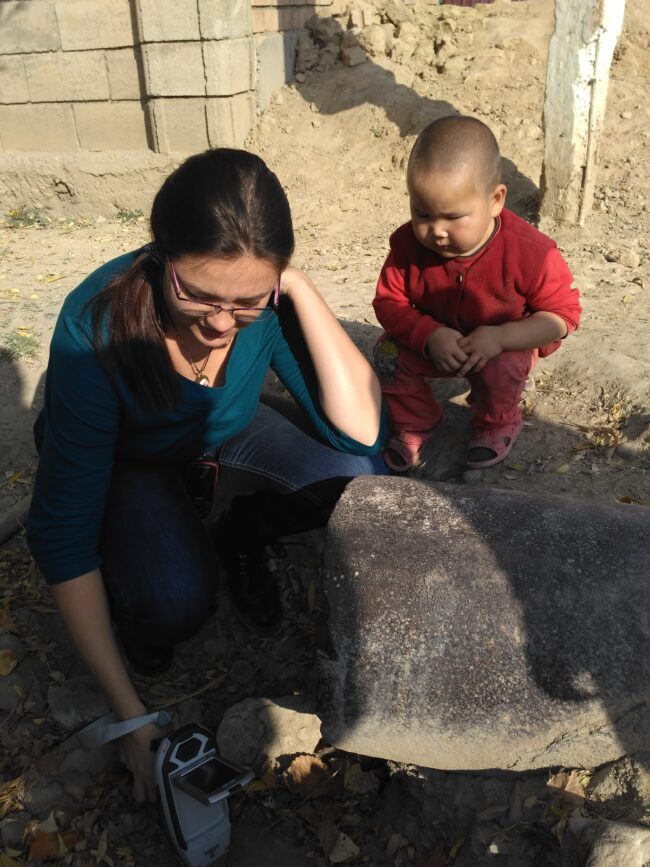
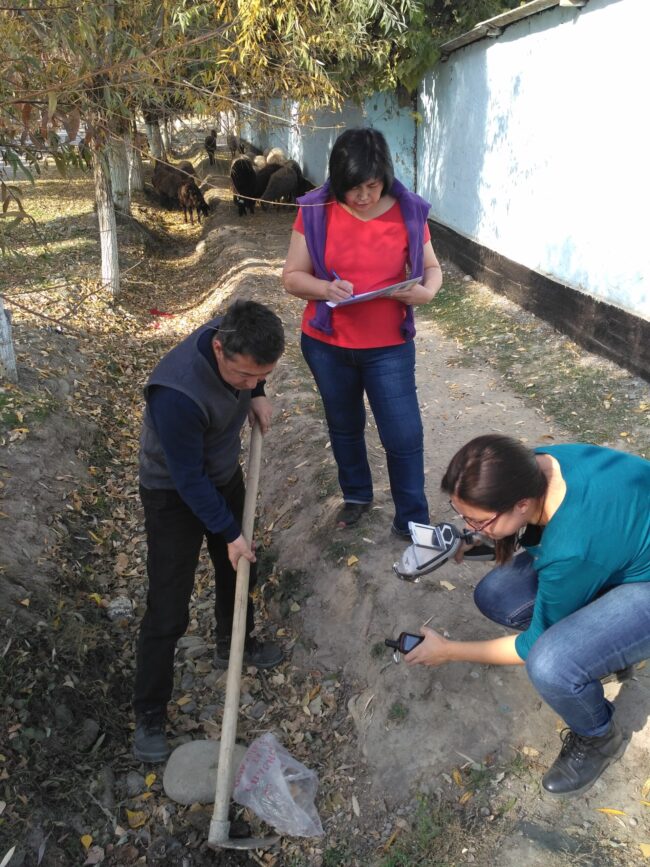
However, by that time there were no resources available for another remediation effort. It is necessary to replace some of the pipes in the irrigation channel and cleanup about 100 meters. The additional remediation work is estimated to cost $5,000.
Link to project description at PE website:
